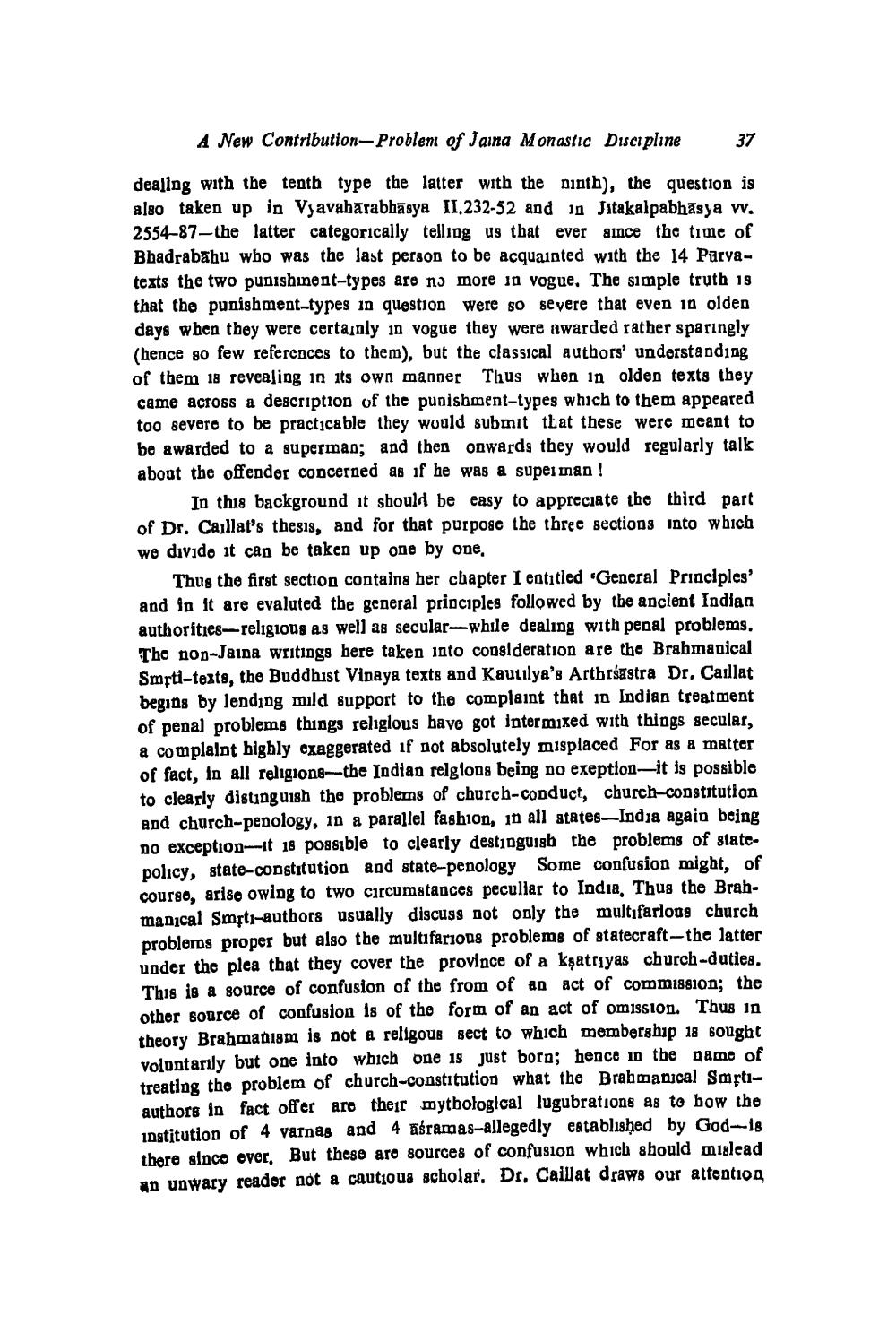________________
A New Contribution-Problem of Jaina Monastic Discipline
dealing with the tenth type the latter with the ninth), the question is also taken up in Vyavaharabhasya II.232-52 and in Jitakalpabhāsya vv. 2554-87-the latter categorically telling us that ever since the time of Bhadrabahu who was the last person to be acquainted with the 14 Parvatexts the two punishment-types are no more in vogue. The simple truth is that the punishment-types in question were so severe that even in olden days when they were certainly in vogue they were awarded rather sparingly (hence so few references to them), but the classical authors' understanding of them 18 revealing in its own manner Thus when in olden texts they came across a description of the punishment-types which to them appeared too severe to be practicable they would submit that these were meant to be awarded to a superman; and then onwards they would regularly talk about the offender concerned as if he was a superman! In this background it should be easy to appreciate the third part of Dr. Caillat's thesis, and for that purpose the three sections into which we divide it can be taken up one by one,
37
Thus the first section contains her chapter I entitled "General Principles' and in it are evaluted the general principles followed by the ancient Indian authorities-religious as well as secular-while dealing with penal problems. The non-Jaina writings here taken into consideration are the Brahmanical Smrti-texts, the Buddhist Vinaya texts and Kautilya's Arthrśastra Dr. Caillat begins by lending mild support to the complaint that in Indian treatment of penal problems things religious have got intermixed with things secular, a complaint highly exaggerated if not absolutely misplaced For as a matter of fact, in all religions-the Indian relgions being no exeption-it is possible to clearly distinguish the problems of church-conduct, church-constitution and church-penology, in a parallel fashion, in all states-India again being no exception-it 18 possible to clearly destinguish the problems of statepolicy, state-constitution and state-penology Some confusion might, of course, arise owing to two circumstances peculiar to India, Thus the Brahmanical Smṛti-authors usually discuss not only the multifarious church problems proper but also the multifarious problems of statecraft-the latter under the plea that they cover the province of a kṣatriyas church-duties. This is a source of confusion of the from of an act of commission; the other source of confusion is of the form of an act of omission. Thus in theory Brahmanism is not a religous sect to which membership 18 sought voluntarily but one into which one is just born; hence in the name of treating the problem of church-constitution what the Brahmanical Smṛtıauthors in fact offer are their mythological lugubrations as to how the institution of 4 varnas and 4 asramas-allegedly established by God-is there since ever, But these are sources of confusion which should mislead an unwary reader not a cautious scholar. Dr. Caillat draws our attention




